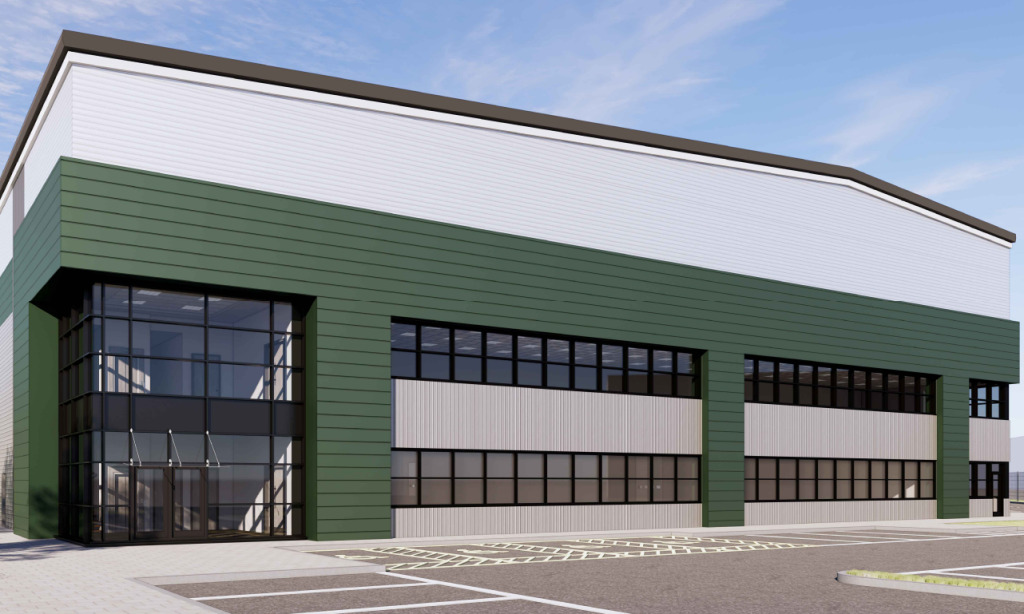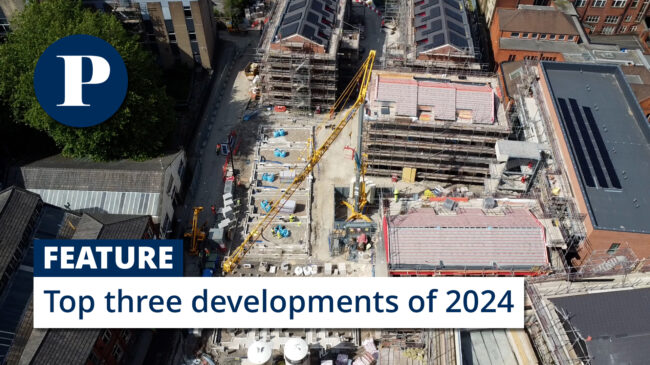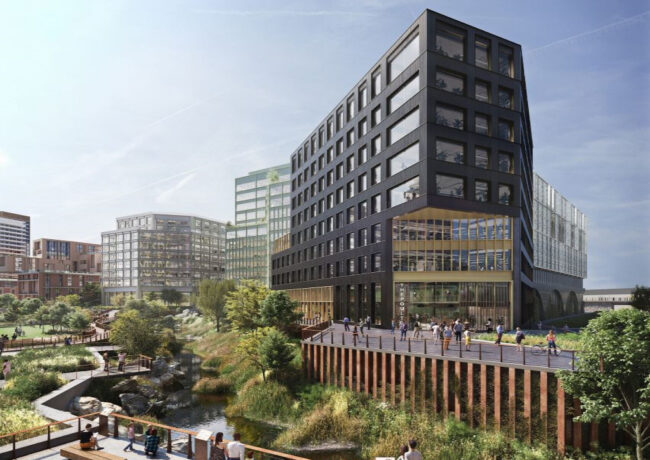The Subplot
The Subplot | Recession-proof property, rates, supermarkets
Welcome to The Subplot, your regular slice of commentary on the business and property market from across the North of England and North Wales.
THIS WEEK
- Let’s try that again: after a massive write-up during the pandemic, and hasty write-down after, are Northern sheds about to prove their real value?
- Elevator pitch: your weekly rundown of who and what is going up, and who is heading the other way
OVER CORRECTION?
Northern sheds as a hedge against recession
This week Blackstone bought into 7m sq ft of Northern sheds as fancy money gambles that the sector will recover from a hasty post-pandemic repricing. Are they right?
Earlier this week Blackstone, the US investment giant, bought out Harbert Management Corporation’s 7m sq ft Greater Manchester portfolio, Place North West reported. For something close to £480m it acquired Trafford Park and Heywood Distribution Park, top-of-class assets. Blackstone paid more than twice the sum rumoured to be on the table in 2012 – which dramatically shows what the pandemic did for pricing of the best warehouse property.
Prices check
But but but…not all industrial assets kept their pandemic-era growth with CBRE reporting a 21% fall in value in 2022. Behind the fall in values sits a change in what shoppers do (less online retail, down from a peak 36% of warehouse take-up to just 20%) and what occupiers want (more value for money). Gerald Eve recorded a sharp return to pre-pandemic occupational market in the first quarter of 2023. Take-up was just 11.7m sq ft in Q1, down 21% on Q4 and below both the five- and 10-year quarterly averages, also the lowest since the pandemic. Cost-conscious occupiers are now heading to second-hand space in large numbers, and this too is denting the market.
Fancy money
Fancy money is now betting the sun will shine on sheds this summer. There’s already some evidence: Gerald Eve says yields have moved 25bps in the right direction in Q1 – not a lot of movement if you are hoping to see a correction 162bps in the second half of 2022, but better than nothing. The talk is that shed values got hacked by about a quarter, and that was too much. Repricing is in progress with two kinds of sheds feeling a new investor warmth: sheds with strong long-term sustainability credentials, like the Harbert portfolio, and the unfairly overlooked.
Yorkshire gold
Yorkshire is a prime beneficiary of the second trend. Leeds and Sheffield are emerging as the top two industrial markets for occupier demand in the UK, according to CoStar, who looked at net absorption – a much better measure of a market than take-up on its own. Leeds City Region scored 5.7m sq ft net absorption in the last year, more than the Leicester focus of the Golden Triangle. Sheffield was the UK’s third busiest market with net absorption of 3m sq ft, above the 2.3m sq ft in Northampton, another ‘golden triangle’ logistics hotspot.
Value matters
“Many occupiers now see Yorkshire as a genuine alternative to the Midlands’ ‘golden triangle’, thanks to recent new developments and upgrades to key distribution routes as well as comparatively lower land values, rents, and labour costs,” CoStar director of market analytics Grant Lonsdale tells Subplot.
Supply tightens
Investors are also looking at the kinds of businesses signing up for shed floorspace. Knight Frank data shows take-up from life sciences manufacturers has increased by 193% in the past 12 months, while leasing transactions from food producers have risen by 94% over the same period. In a tighter market – the firm reckons 2023 take-up of sheds that are 50,000 sq ft or more will be just 36m sq ft in 2023, compared to 46m sq ft in 2022 – this is the kind of thing that’s good to know.
Reasons to be cheerful
Investors also think they can see online sales growing once again – albeit more steadily. Knight Frank say online sales volumes are forecast to rise to £147bn by 2027 from £86bn in 2022 – this translates to 45m sq ft of warehouse demand. Manufacturers have also returned to the market. Meanwhile, the supply of new warehousing sites is flatlining. Buying sites – yes. Seeking planning permission – yes. Actually building – not so much. What there is tends to be smaller scale: Bericote in St Helens, Chancerygate in Congleton, and so on.
Repricing already happening
Add all these variables together and investors think they’ve reason to suppose the price correction in sheds is over, and due to bounce the other way. Are we seeing this on the ground? Stories abound of development land recovering some of its value after a giddying post-pandemic plunge of about 50%. The talk is of a 30% discount instead.
Meanwhile, there’s chatter about rising rents – a new record of £9.50/sq ft for a 50,000+ sq ft unit is said to be close in Greater Manchester – whilst build costs are beginning to stabilise. The list of requirements remains long. “It’s making developers more confident,” says Sam Royle, partner in Knight Frank’s Manchester office, who also predicts more owner-occupiers moving back into a market they can now more readily afford.
Be patient
The brightest minds hint at a repricing or price correction in the near term, although not perhaps in 2023. The North has a real advantage because vacancy rates here are so low – 3.7% in the North West, for instance, way below the 5%-8% that usually stimulates rental growth. “Pricing has stabilised, and we don’t see yields softening further, but interest rates aren’t going to come down and will move out further. So I don’t see a dramatic repricing this year,” Claire Williams, Industrial & Logistics Research Lead at Knight Frank, tells Subplot.
Instead, maybe keep your eye on late 2024/2025.
Learn more about the warehouse scene in the North West at Place’s Industrial + Logistics event on 11 May.
 ELEVATOR PITCH
ELEVATOR PITCH
Going up, or going down? This week’s movers
A great week to sell a small urban logistics site to a supermarket; not such a great week if you’re interested in medium-term trends in the regional economy. Stand clear of the doors, please. Going up.
 The weekly shop
The weekly shop
The best place to be in times of economic trouble is the place nobody can avoid, and grocery shopping is the best – certainly less tricky than the alternatives, health, death, sex, and hair.
The UK grocery market is expected to grow by £42bn between 2022 and 2027, according to London-based researchers Technavio. The rate of growth thereafter will be a nice steady 3.83%.
The big names are moving in, feeding and feeding off this growth, and none are quicker off the mark than Lidl, which has a hit list of 77 new store locations in Yorkshire (including no less than 14 in Leeds), as Place Yorkshire reported.
Most won’t get built because there are no sites, or none that are viable, besides the history of store wars shows that a lot of site searching and acquisition is designed to spook or otherwise unsettle competitors.
Even so, that’s a lot of new stores: you can be sure that a great many owners of Yorkshire sites that would have been judged ideal for an urban logistics unit will now be eyeing up offers from supermarkets.
 Levelling up
Levelling up
Business rates revaluation creates a lot of anxiety: the latest round is going to hurt ratepayers in newly fashionable locations or business sectors. The flip side is it makes a lot of money for local councils, and is a useful(-ish) way to measure economic change. We now have figures for what business rates are expected to yield in Northern councils in 2023-2024, and comparing that with pre-pandemic 2019-2020 numbers reveals who is going up and who is going down.
Generally speaking, the North West does a little better, and Yorkshire a little worse. In 2019-2020 Leeds had the largest tax take at £370m (though it was only allowed to keep 75% of it). This will have slipped back to £347m in 2023-2024. Sheffield (only allowed to keep 50%) will dip from £199m to £183m, Bradford (keeping 75%) from £131m to £118m. Kingston-upon-Hull dances to the same tune, down from £91m to £84m (and only allowed to keep 50%).
On the other side of the hills, the city of Manchester will see rates rise from £344m to £358m (and could keep the lot). Salford will also enjoy an increase from £87m to £101m.
But beyond the metropolitan core, it looks like Yorkshire: Trafford, will dip from £154m to £146m. Liverpool is also down from £196m to £182m and Preston from £57m to £48m (Preston keeps just 50%, the Trafford and Liverpool keep the lot). This adds some important nuance to what we already knew, which is that over the last decade and a half the North West’s economy grew about 6% faster than Yorkshire’s, and the gap is (ever so slightly) widening.
But it also shows that the effect of the pandemic was not to create a “new normal” of suburbanism, but to reinforce the urban core.
Get in touch with David Thame: [email protected]





